About Parma
Parma is a prosperous and attractive historic town in the Emilia-Romagna region of northern Italy. It is famous for its fine cheese (parmigiano or parmesan) and ham, and this area is renowned throughout Italy as one of the best places to eat.
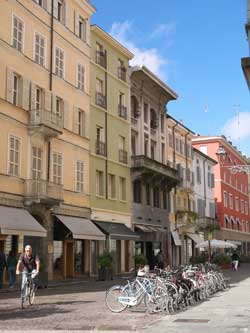
Parma is a surprisingly well-kept secret as far as tourism is concerned, perhaps because the comfortably-off town feels little need to advertise its charms. But the handful of visitors who arrive here will find an important art gallery, museums, frescoed churches, good shopping, charming historic lanes and of course the rich local cuisine. Parma is a very good weekend break destination, with plenty to occupy tourists for two or three days, and some interesting excursions for a longer stay. It is not a particularly cheap town for visitors, but neither is it a rip-off, and the eating, shopping and hotels are good quality.
Parma is in the centre of northern Italy with frequent trains to Bologna, Milan and other useful destinations. It even has an airport utilised, at the time of writing, by Ryanair, with flights from London.
Where to stay
Visitors could see the best of Parma in a day – the main attractions are close together – but the town really deserves a more leisurely stay. You should definitely find accommodation centrally if possible, as strolling around the town’s historic streets is part of the pleasure of Parma. The centre is partly pedestrianised and there are strict traffic restrictions, so if you have a car you may need to park it outside the central area.
Parma tourist attractions
A good first port of call is Parma’s tourist office on Strada Melloni, where you can pick up a free map of the town – Parma is big enough for this to be useful – and a list of museum opening times. It is worth studying the latter; as is usual in Italy, many museums and churches are closed for several hours in the middle of the day, and also on Mondays, so you may want to plan your sightseeing accordingly. Before you start paying admission fees, investigate the latest combined tickets – these aren’t always well-publicised and you may be able to save a significant amount. Locals get around on bicycles; if you want to hire a bike, there is a noleggio bici point by the Viale Toschi car park, a few minutes’ walk straight ahead from the railway station. The whole central area of Parma can be visited on foot, but it is also served by urban buses.
Every comment you will read about Parma refers to the wealth of the town. This is because it is a significant feature of the town and noticeable every way you turn, from smart liveried municipal rubbish bins to pricey designer clothes shops. The town’s not flash, but it is comfortable, and there can’t be many city centres as civilised as Parma on a Sunday, when well-dressed locals stroll or cycle around the medieval lanes, chatting with acquaintances and admiring each other’s babies or dogs.
The aesthetic heart of Parma is its cathedral square, Piazza Duomo. This attractive cobbled square is surrounded by historic buildings and is set a little apart from the main shopping streets so it is a peaceful as well as handsome spot – until evening, at least, when it becomes a teenager hangout. Three buildings dominate the open space: the Duomo, the adjoining Campanile (belltower) and the striking Battistero (baptistery). The Duomo is an attractive and venerable cathedral, in the Lombard-Romanesque style. The dome is filled with a famous sixteenth-century fresco by local artist Antonio Allegri, known as Correggio, whose work will become a feature of any visit to Parma. Other highlights of the interior include a marble relief of the Depostition by sculptor/architect Benedetto Antelami , who also designed the baptistery next door, and some lovely fifteenth-century frescoes in the left-hand side-chapels, packed with Biblical stories, devils and details both charming and gory.
The baptistery, or Battistero, is a striking and memorable building; an octagon constructed with pink Verona marble and decorated with fine medieval carvings by Antelami – it is worth walking around the exterior to admire the sculptures around the building’s four portals. The structure’s unusual appearance and the marble’s still-sharp lines and edges give it a suprisingly modern appearance, though actually the building dates to the end of the twelfth century. There’s an admission charge for visiting the Battistero, but it is well worth paying to see the huge expanse of colourful frescoes which decorate the domed interior, and which have been carefully restored.
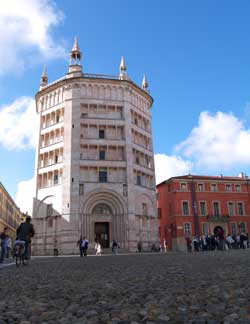
The Battistero can be visited on a combined ticket with the Museo Diocesano over the square, a small museum containing various exhibits relating to the archaeology and history of the piazza, including the original gold angel from the top of the campanile, some worn statues from the Battistero, one carved from a much earlier Roman statue. A computer screen in the museum allows you to view detailed close-up images of the Battistero’s frescoes before and after their restoration.
Walking south along narrow lanes from Piazza Duomo, visitors reach the modern town’s central square, Piazza Garibaldi. Crossed by a major traffic artery, this was once the forum of the Roman town and is still a busy spot with outdoor cafes. Strada Farini, leading south from the piazza, is a lively street of bars and restaurants. Just off the Piazza Garibaldi is one of Parma’s finest churches, called La Steccata. The grand Renaissance building comtains some imposing tombs, and important frescoes by another great local artist, Francesco Mazzola, known as Il Parmigianino, one of the town’s leading artists.
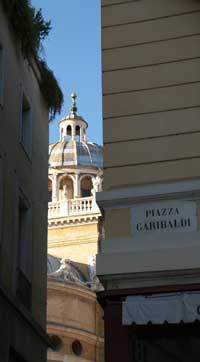
One of Parma’s principal landmarks is the bulky Palazzo della Pilotta, a sixteenth-century ‘addition’ to the grand palace of the ruling Farnese family, on the other side of the river. The building, sitting alongside a grassy park and a memorial to Verdi, now houses Parma’s art gallery, the Galleria Nazionale. The large collection is well-presented and includes some important art as well as many lesser works. Paintings by both Correggio and Parmigianino, naturally, are also among the gallery’s most prized exhibits, and are displayed in a small dedicted series of rooms. There’s not a great deal by Parmigianino, but his exquisite painting of a coy young woman, identified as a Turkish slave, is a gem. Other notable artists featured in the gallery include Fra Angelico, Leonardo da Vinci, Cima da Conegliano, Paolo Veneziano, Canaletto, Hans Holbein the Younger and Van Dyck. Look out for two Bernini busts, sculpted ten years apart, of Ranuccio II Farnese, a weighty and florid gentleman, also featured in a painted portrait nearby. The entrance to the gallery lies through the Teatro Farnese, a remarkable wooden theatre built in the seventeenth century within a huge hall, and rebuilt after bombing in the Second World War. Also housed in Palazzo della Pilotta is the local archaeological museum (Museo Archeologico).
The Camera di San Paolo, entered through a garden on Strada Melloni, by the tourist office, is a small but very fine attraction. Even if your time in Parma is limited, it is worth popping in. The buildings here were once part of a convent, run during the Renaissance by an urbane abbess, Giovanna di Piacenza, who commissioned fine decorations – more mythological and humanist than religious in tone – from leading local artists. Several rooms can be visited, of which two contain masterpieces: glorious frescoed ceilings. The first, painted by local artist Alessandro Araldi in 1514, is a fantastical crowd of images in the fashionable ‘grotesque’ style, echoing the ancient wall-paintings rediscovered in Rome. Pictorial scenes illustrate Biblical stories, and also myths and allegories. The greatest sight of all, though is in the adjacent room, frescoed by Correggio in 1519. The umbrella-vaulted ceiling is richly-coloured with blues and greens, as entwining foliage cascades down each panel to a lunette featuring cherubs – usually irritating creatures, but here given an unaccustomed dignity by their gorgeous setting. Both this ceiling and the Araldi fresco next door were designed to pay tribute to the qualities of the abbess, and the room is dominated by the chaste goddess Diana, painted on the chimney breast.
Just over a river bridge from Palazzo della Pilotta is the Parco Ducale, a large leafy park which was once the garden of the Ducal Palace. The yellow-painted Palazzo Ducale, begun in the sixteenth century for the Farnese dukes, is now a carabinieri headquarters, but some first-floor frescoed rooms can be visited on short accompanied tours (small admission charge). Check the latest opening times, buzz for admission at the security gate to the right of the building and wait for a guide. The formal rooms which can be visited include one which boasts a remarkable ceiling covered with hundreds of birds sculpted in stucco, each one different. The frescoes are delicate pastel scenes of poetry and mythology, heavily romantic in tone, with lots of kissing and courting and an unusual feasting scene with transparent painted columnns.
Among the other museums in town is the Pinacoteca Stuard, an art collection housed in a former convent, containing a wide range of paintings from early altar pieces to twentieth-century art. There are some interesting nineteenth-century scenes of Parma, and a curious lottery machine dating to the early nineteenth century – Italians were obviously just as devoted to lotteries then as they are now.
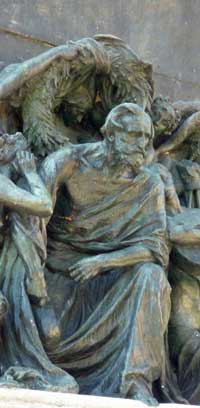
Parma has several other interesting churches, and also few more, sometimes unusual museums. These include the Spezeria di San Giovanni Evangelista, a historic monastery pharmacy, the Casa del Suono, a stylish ‘Museum of Sound,’ and the birthplace of conductor Arturo Toscanini. Another small museum, the Castello dei Burattini (located in the courtyard behind the Camera di San Paolo entrance), is dedicated to marionette shows and is a fascinating curiosity, with many historic puppets on display, occasional shows, and histories of the family companies which toured northern Italy with their differing traditions of performance.
Drivers can visit more attractions in the surrounding area, including the Musei del Cibo, a ‘Food Museum’ circuit with museums in the Parma province dedicated to parmesan cheese, to the tomato, to salami and of course to ham. Among the interesting castles near Parma, the most impressive is the Castello di Torrechiara, while around the little town of Busseto, north-west of Parma, music-lovers can visit several sights connected to Giuseppe Verdi, including his birthplace-museum.
Restaurants, food and drink
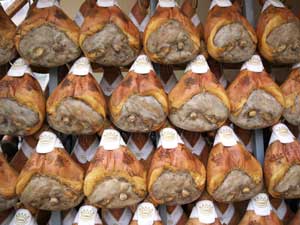
Eating is an important activity in Parma, and the town has a range of restaurants offering good local cuisine. Parma is very proud of its culinary traditions and local produce, and tourists don’t need to be wary when choosing a restaurant here; just follow the locals. Menus will vary according to season, reflecting whichever regional specialities are at their best. You are likely to find hearty pasta dishes such as tortelli – pasta parcels filled with seasonal products such as pumpkin, potato, herbs, porcini mushrooms, and sometimes served as a tris di tortelli – a selection of three kinds. Filling potato gnocchi are also popular, and as well as the obvious parma ham in its various incarnations, other meats include horse meat. Local wines from the area around Parma, appearing on restaurant wine lists and as affordable house wines include a lightly effervescent yellow Malvasia, Sauvignon and red Colli di Parma.
For a rich, filling meal in bustling traditional surroundings, visit the Trattoria Corrieri (Via Conservatorio, 1). This local institution is good-value and atmospheric with filling dishes. Make sure you visit the downstairs bathrooms to see the restaurant’s stagey ham and cheese cellars. A lighter lunch, in the company of local office workers, can be enjoyed in the friendly surroundings of Cantina Macis (Borgo XX Marzo, 14/16) and for a more formal dinner visitors could try the historic Sorelle Picchi (Via Farini), in the backroom of a speciality food shop. Just around the corner from the Duomo, locals queue for the ice creams of the Gelateria Novecento.
Events and things to do
Parma’s theatre, the Teatro Regio puts on opera, dance and concert performances during the winter and spring, as well as a range of outdoor summer events. The theatre is also the principal venue for an annual festival dedicted to the composer Giuseppe Verdi.
Autumn is the liveliest time to visit Parma. As well as an annual Verdi festival in October, you’ll find a range of food festivals around the Parma area. The Festa del Prosciutto celebrates Parma’s famous ham and other local festivals are dedicated to tasty products such as porcini mushrooms. Parma’s annual Palio festival, also in the autumn, culminates in youthful relay races between competing districts of the town; the climax of a merry weekend of historical events and pageantry.
Parma travel and transport
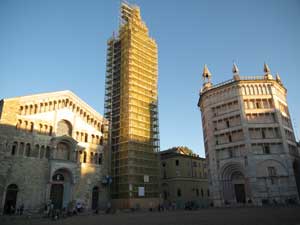
Parma Airport (Aeroporto Giuseppe Verdi) is served by Ryanair flights from London at the time of writing. The airport is very close to the town, and is connected with Parma railway station by urban bus number 6 (operated by TEP). The latest timetables can be found on the TEP and the airport websites (see links panel). Tickets cost 1.50 onboard the bus and 1 if you buy them in advance, at a news-stand, for example. Nearby Bologna Airport is served by international airlines including British Airways and Ryanair.
Parma is on a train route from Bologna to Milan, and it is well served by trains from both of these cities. The Duomo and the heart of historic Parma can be reached after a walk of around fifteen minutes from the railway station. Head across the piazza in front of the railway station and when you reach the busy Viale Bottego, turn left. Then take a right turn down Strada Garibaldi, and simply follow this street into the centre. When you reach the grassy park and Palazzo della Pilotta on your right, take a left turn down Strada Melloni, where you’ll find the tourist information office. If it’s closed, you can also pick up some pamphlets and information in the Parma Point shop, a bit further down Strada Garibaldi. Parma Point sells useful guidebooks in different languages, and a large range of souvenirs.
Central Parma is conveniently explored on foot, and distances are quite comfortable for walking. Parma’s local bus network may be useful, though, for tourists wishing to travel beyond the town centre. Public transport in Parma is operated by TEP, and there are useful bus stops by the railway station, on Strada Garibaldi and in Piazza Garibaldi.
Parma has strict traffic restrictions and visitors can’t take cars right into the heart of town. There is a car park on Viale Toschi, beside the river, which is only a few minutes’ walk from the attractions.
Big Italian tourist destinations which can conveniently be combined with Parma include Bologna, Mantua (Mantova), Milan or – for something very different – the pretty Cinque Terre coastline (La Spezia, gateway to the coast, is two hours away by train). More locally, and comfortably visitable as day trips, are Modena (food, Ferrari, Pavaratti and more), Piacenza, and the handsome castles and villages dotting the countryside in this part of Emilia Romagna.
Accommodation
For a special stay in Parma, you can’t do much better than the elegant Palazzo dalla Rosa Prati, in the best position in town for sightseeing and absorbing Parma’s history. Right next to the Baptistery, this is a pretty magical location. I stayed there several years ago and loved it.
If you’re looking for a comfortable and convenient stay on a tighter budget, I recommend the friendly B&B Le Stanze di Rigoletto. Located between the railway station and the heart of town, it’s very handy if you’re using public transport (but is up steep staircases). Three comfortable rooms, generous breakfast with homemade cake, and a welcoming host. I stayed five nights in 2023 exploring Parma and the surrounding area by train and bus, and found it an ideal and inexpensive base.
Parma has a good choice of B&Bs in the central area and suburbs, most with just one or two rooms – so I would definitely book at least a month or two ahead if you want the best choice. Apartments for a self-catering stay may be a good option, if you’d like to take advantage of the local food markets and feel independent. For something between the two, Piumaviola Beds & Apartments is an aparthotel offering a mixture of bedrooms and apartments, some with kitchen facilities. The town’s hotels are generally not especially inspiring, but you can find some practical and decent options (always check the most recent reviews) including chains like the Novotel Parma Centro, near the railway station. In the past I’ve spent a night at the Savoy Hotel, an affordable hotel with minimalist modern rooms between the station and town centre.
> Parma hotels, apartments and B&Bs – availability and price search. (Affiliate links: If you make a booking through these links you’ll be supporting this website without paying more – thank you).
Emilia-Romagna destinations
Useful external links
Teatro Regio – theatre and Verdi Festival
Trattoria Corrieri & sister restaurants
Musei del Cibo Food museums